- External8 Oct 2012
c355.jpg?itok=kEFlTGoZ) Fridjof Nansen: Norwegian explorer, scientist, diplomat, humanitarian and Nobel Peace Prize laureate. Photo from Deutsches Bundesarchiv (German Federal Archive) Bild 102-09772
Fridjof Nansen: Norwegian explorer, scientist, diplomat, humanitarian and Nobel Peace Prize laureate. Photo from Deutsches Bundesarchiv (German Federal Archive) Bild 102-09772Prof. A. David Smith, Honorary Associate Director of the Unit, will present at The Nansen Neruoscience Lectures 2012. The lectures, commorating the fundamental contribution of Fridtjof Nansen to neuroscience, will be held on the 10th October 2012 at the Norwegian Academy of Science and Letters, Oslo.
Prof. Smith's lecture will be entitled, "Slowing progression in Alzheimer's disease by loweing homocysteine– evidence from neuroimaging."
- Unit4 Oct 2012
b367.jpg?itok=wbLm_YMm)
Yesterday, another class of artists came to visit the Basal Ganglia labs. It is the beginning of term, and the new first year students on the Central Saint Martins MA Art and Science Programme are straight into an introduction to a biomedical research lab.
The 20 graduate students are interested in science in the context of their art practice, but may not have experience of a scientific research environment. Coming to the ANU was an opportunity to discover what the research, people and technology are like here. Scientists demonstrated some of the experimental techniques used, talked through our research objectives to learn more about the basal ganglia brain structures, and answered many questions.
Meanwhile, down the road at Arts at the Old Fire Station, the second year art students were installing their artworks for A Nervous Encounter. These pieces are the result of an extended collaboration, following their first visit to the Basal Ganglia lab nearly a year ago. With media ranging from print-making and photography to sound pieces, artworks respond to neuroscience research in a variety of ways, from the manipulation of microscope images, to utilizing sounds from the lab, and installations exploring ideas about universal structures in nature.
It was very exciting to see the preparation for the exhibition, which opens on Saturday 6 October. A Nervous Encounter continues from 6-20 October (Tues-Sat, 10-5pm).
- Unit1 Oct 2012
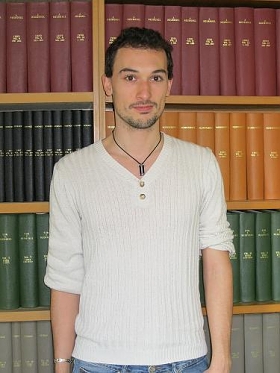
We welcome Daniel Dautan as a new PhD student in the Unit. Under the co-supervision of Dr Juan Mena-Segovia in Oxford and Dr Todor Gerdjikov in Leicester, Daniel will investigate the functional heterogeneity of dopamine neurons in the ventral tegmental area (VTA) in acute and chronic electrophysiological preparations.
Daniel graduated from the University of Nice-Sophia Antipolis (France) with an MSc in Neuroscience, Pharmacology and Electrophysiology. He has successfully concluded two internships, one with Dr Philippe Faure in University Paris 6 where is studied the projection of dopaminergic cells in VTA and their responses to a nicotinic injection, and a second one with Dr Carlos Eduardo-Valencia in the Netherlands Institute of Neuroscience where he studied the electrophysiological and neurochemical responses in the orbitofrontal cortex following deep brain stimulation of the internal capsule.
- Unit1 Oct 2012
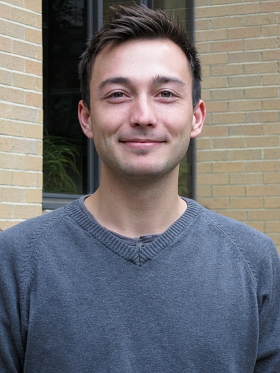 Szabolcs Biro
Szabolcs BiroWe are pleased to welcome Szabolcs Biró who has joining Professor Somogyi’s lab as a Research Technician. Szabolcs has recently completed his BSc degree at the Budapest University of Technology & Economics as a biochemical engineer.
- Unit18 Sep 2012
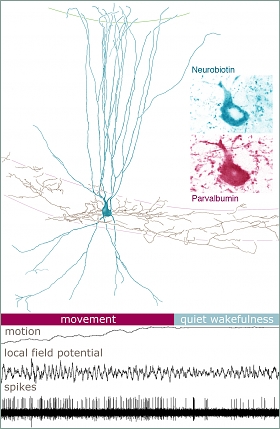
Damien Lapray and his collaborators at Oxford and Vienna explored how the firing rate and patterns of GABAergic interneurons is adjusted in the neuronal network to ongoing behaviour in freely moving rats. They used novel innovative technology to record and label single GABAergic neurons while the rat moved, slept or just kept quiet in a small arena. Recorded parvalbumin–expressing basket interneurons innervate somata and proximal pyramidal cell dendrites, whereas nitric–oxide–synthase– and neuropeptide–Y–expressing ivy cells provide synaptic and extrasynaptic dendritic modulation. Basket and ivy cells showed distinct spike timing dynamics, firing at different rates and times during theta and ripple oscillations. Basket but not ivy cells changed their firing rates during movement, sleep and quiet wakefulness, suggesting that basket cells coordinate cell assemblies in a behavioral state–contingent manner, whereas persistently–firing ivy cells might control network excitability and homeostasis. Different interneuron types provide GABA to specific subcellular domains at defined times and rates, thus differentially controlling network activity during behavior.
- Unit24 Aug 2012
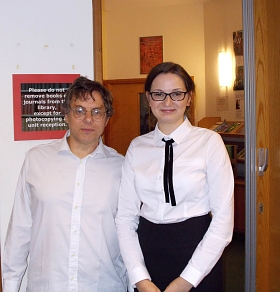
Miroslawa Manko successfully defended (only minor corrections have been requested by the examiners) her D.Phil. thesis entitled: "Role of intercalated and NPY-expressing cells in neuronal circuit of the amygdala" on the 24th of August 2012. Miroslawa was supervised by Dr. Marco Capogna. Her internal examiner was Dr. Ed Mann (DPAG, Oxford), and her external examiner was Prof. Kaspar Vogt (Biozentrum, Basel, Switzerland). Miroslawa will start working in the laboratory of Dr. Ron Stoop (Dept. Psychiatry, University of Lausanne, Switzerland) supported by an EMBO post-doctoral fellowship from November 2012.
- Unit20 Aug 2012
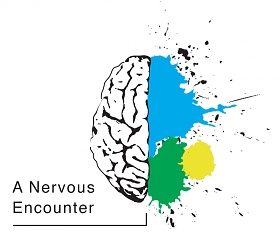
A Nervous Encounter charts the creative interaction between scientists in the Basal Ganglia labs at the MRC Anatomical Neuropharmacology Unit and artists studying on the new interdisciplinary MA Art and Science programme based at Central Saint Martins, University of the Arts London.
Over a period of months laboratory interactions have resulted in shared insights into themes ranging from current brain research and equipment, to the passion and patience involved in our neuroscience.
Artworks in response to this process will be exhibited at the Old Fire Station Gallery Oxford from 5th-20th October 2012.
The relationships, conversations and ideas forming through A Nervous Encounter are being documented at www.nervousencounter.com.
Read about the curious stacks of miniature suitcase-like slide boxes, or the unbelievably long extensions projecting from neurons or the lunar-landscape brain imagery produced using a beam of electrons, and many diverse themes that interested the visiting artists. Follow the blog in the build up to the exhibition to read how the artists respond to these and other topics.
- Unit19 Aug 2012
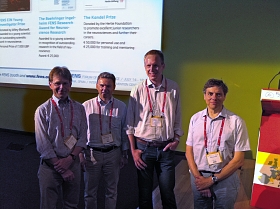 Speakers at FENS symposium: “Amygdala inhibitory circuits and the control of fear”, from left: Hans-Christian Pape, Francesco Ferraguti, Andreas Luthi, Marco Capogna.
Speakers at FENS symposium: “Amygdala inhibitory circuits and the control of fear”, from left: Hans-Christian Pape, Francesco Ferraguti, Andreas Luthi, Marco Capogna. Marco Capogna’s group contributed to the 8th FENS forum of neuroscience held in Barcelona. Marco Capogna joined the FENS Satellite Meeting: “How mind emerges from brain, a view into the future” (download PDF of programme), organised by B-Debate, Barcelona, and gave a talk entitled: “Theta network oscillations: focus on GABAergic cells”. Marco Capogna was also a speaker at the FENS symposium S55 entitled: “Amygdala inhibitory circuits and the control of fear”.
The laboratory presented three posters which were all well attended. Miroslawa Manko, a DPhil student, and Thomas Bienvenu (funded by Region Aquitaine Grant from Cyril Herry's lab INSERM Bordeaux) presented posters on amygdala neurons in vitro and in vivo, entitled “Mechanisms of GABAA-slow evoked by NPY expressing GABAergic cells in amygdala”, and “Structure and function of a novel intercalated cell type in the amygdala”, respectively. Gengyu Li, a DPhil student, presented data in a poster on hippocampal GABAergic neurons obtained using paired recording and voltage-imaging approaches. The title of the poster was: “Nitric oxide modulates synaptic inhibition in the stratum lacunosum moleculare of the hippocampus”.
- Unit14 Aug 2012
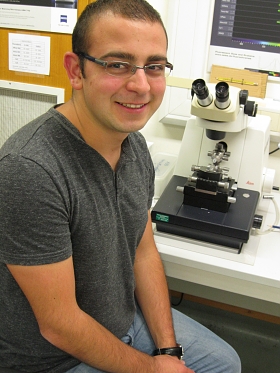
We are pleased to welcome Ahmet Tugrul Ozdemir to the Unit.
Tugrul has joined Professor Peter Somogyi’s group for a short visit to study advanced research methods including the confocal microscopic characterization of different neuronal cell types.
Tugrul is currently a fourth year student of Molecular Biology, Genetics & Psychology at Bilkent University, Ankara and has spent a year (2011-2012) as an exchange student at Professor Ted Edmund Powers’ Cell Biology lab at the University of California in Davis, and more recently a two month visit to Dr. Lu Chen’s Neuroscience lab at Stanford University.
- Unit27 Jul 2012
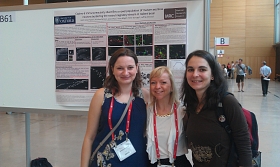
Jeff McIlhinney and Ruth Faram went to this year’s FENS conference in Barcelona. With over 7,000 people in attendance, the conference was a showcase for current research, ideas and discussion, spanning the entire field of neuroscience.
Ruth's DPhil project relies heavily on neuroanatomical techniques, yet her host lab primarily researches aspects of protein and molecular biology. FENS was therefore a fantastic opportunity to explore these very different research areas, both jointly and independently – and she gained much insight into how different aspects of neuroscience research can be integrated, coming away with ideas that she would never have thought possible prior to attending the conference. From a DPhil student’s perspective, the ability to present her research to the wider field, and to be involved in critical discussion, was priceless. The conference was an excellent opportunity to network and absorb current thinking in an environment where neuroscience can only flourish, each day offering multiple plenary talks, special lectures and extra symposia.
She received an overwhelming amount of positive feedback during the poster session. The copine-6 immunopositive ‘granule cell-like interneurons’ that are the backbone of her thesis proved interesting to many visitors: specialists in the olfactory bulb, adult neurogenesis and neural development were keen to discuss various aspects of her current research and offer her critical advice. Judging by the smiles of other students from the unit, we all gained a lot from attending FENS, and the location in sunny Barcelona certainly made it a conference to remember!
Ruth's poster is available to download using the link below.